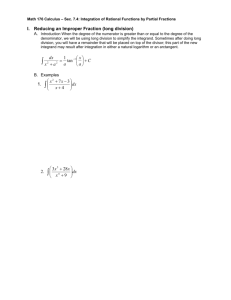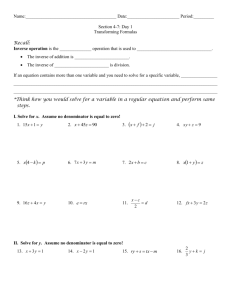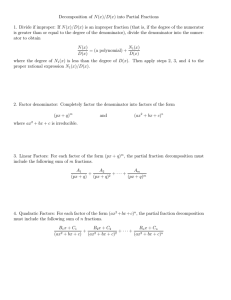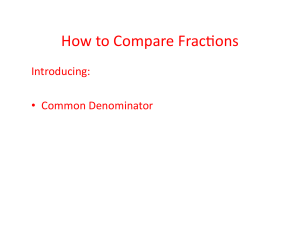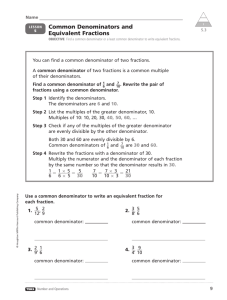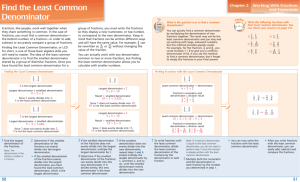Common Denominators
advertisement
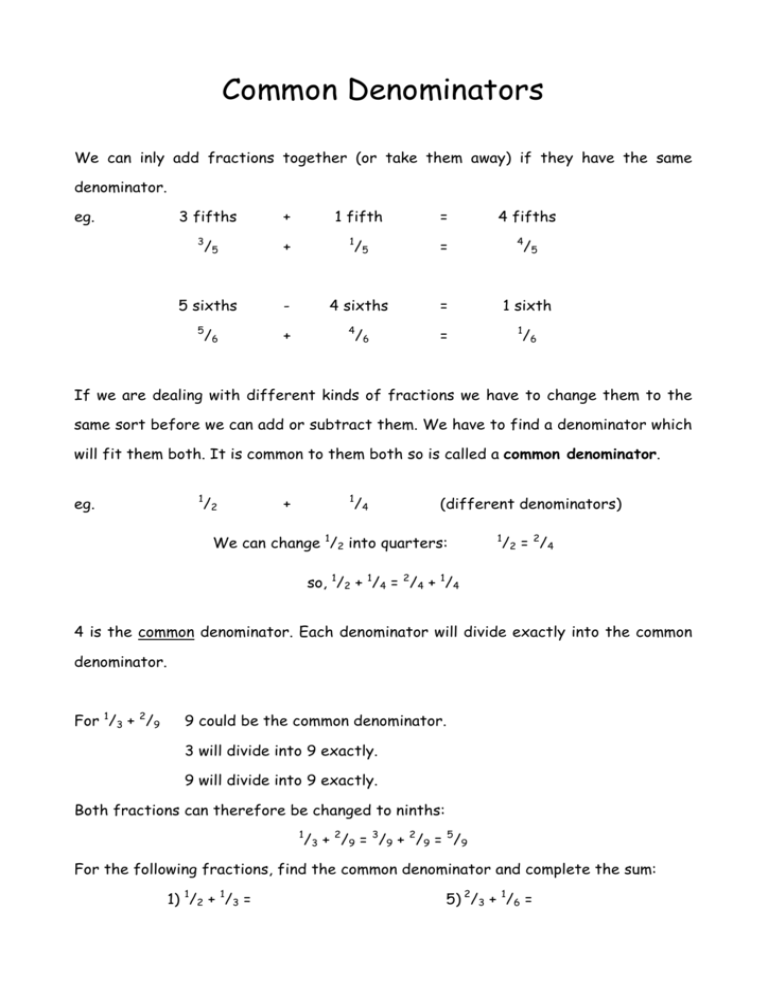
Common Denominators We can inly add fractions together (or take them away) if they have the same denominator. eg. 3 fifths 3 + /5 + 5 sixths - 5 /6 1 fifth 1 /5 = 4 sixths = 4 + = /6 4 fifths 4 /5 1 sixth 1 = /6 If we are dealing with different kinds of fractions we have to change them to the same sort before we can add or subtract them. We have to find a denominator which will fit them both. It is common to them both so is called a common denominator. eg. 1 /2 1 + /4 (different denominators) We can change 1/2 into quarters: 1 /2 = 2/4 so, 1/2 + 1/4 = 2/4 + 1/4 4 is the common denominator. Each denominator will divide exactly into the common denominator. For 1/3 + 2/9 9 could be the common denominator. 3 will divide into 9 exactly. 9 will divide into 9 exactly. Both fractions can therefore be changed to ninths: 1 /3 + 2/9 = 3/9 + 2/9 = 5/9 For the following fractions, find the common denominator and complete the sum: 1) 1/2 + 1/3 = 5) 2/3 + 1/6 = 2) 1/4 + 1/3 = 6) 1/2 + 3/7 = 3) 2/5 + 3/10 = 7) 2/3 + 5/8 = 4) 1/6 + 2/5 = 8) 1/2 + 7/9 = Place the following numbers in order, smallest first. (Hint: to do this you will first need to convert them from mixed numbers to improper fractions. Then you need to convert them all to a common denominator): 9) 21/10 , 13/10 , 21/2 , 11/5 , 13/4 10) 14/5 , 23/4 , 21/2 , 13/10 , 24/10 11) In the same way, suggest a fraction that is greater than one quarter and smaller than one third. 12) What number is half way between 51/4 and 51/2? 13) What number is half way between 51/3 and 52/3?

